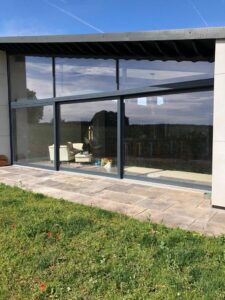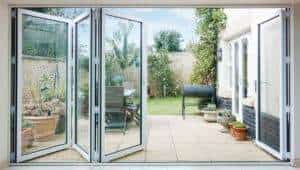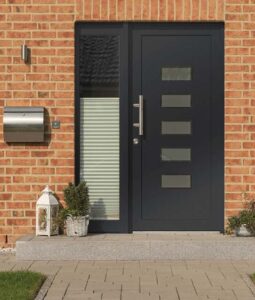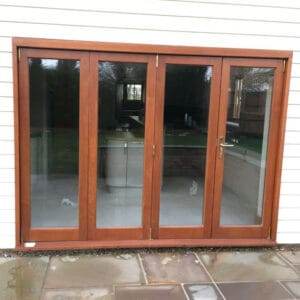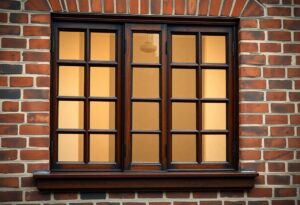Welcome to our comprehensive guide on how to properly prepare wooden windows and doors for painting. Prep is crucial to ensure a smooth and durable paint job that will stand the test of time. We will take you through the key steps of cleaning, sanding, making repairs, and priming your wooden surfaces, using high-quality products like AQUAPRIMER 2900 & GORI 615 for optimal results. Following these steps will not only enhance the appearance of your windows and doors but also protect them from the elements for years to come.
Starting with cleaning to remove any dirt and grease, then sanding to smooth out imperfections, and repairing any cracks or holes, each step is crucial in achieving a professional finish. The priming process, using products like AQUAPRIMER 2900 & GORI 615, seals the wood and provides a solid base for the paint to adhere to. With Teknos’ high-quality primers, you can be assured of excellent surface appearance and durability. Follow our step-by-step guide for preparing your wooden windows and doors, and give them a fresh new look that will last for years to come.
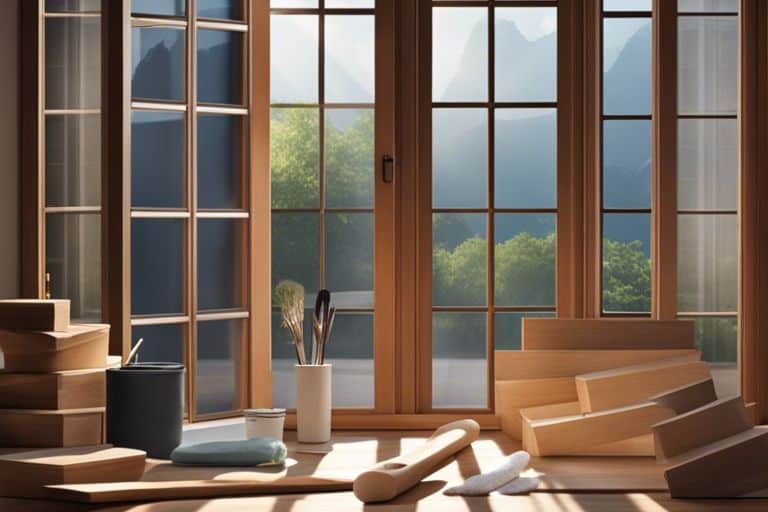
Key Takeaways:
- Cleaning is important: Before painting wooden windows and doors, it is crucial to start by cleaning the surface to remove dirt, grease, and loose paint. Use a mild detergent solution and a scrub brush, then rinse thoroughly and let dry.
- Sanding for smoothness: Lightly sanding the wood surface with fine-grit sandpaper helps to smooth out imperfections and create a rough texture for the new paint to adhere to. After sanding, wipe down the surface with a damp cloth to remove dust.
- Priming for durability: Applying a primer specifically designed for wood is crucial for sealing the wood, providing a base for the paint to adhere to, and increasing the durability of the paint job. Teknos’ AQUAPRIMER 2900 and GORI 615 flow coat primers offer excellent run-off properties and colour equalisation effects, ensuring a high-quality finish.
Types of Wooden Windows and Doors
Clearly, before painting wooden windows and doors, it is crucial to understand the different types available in order to choose the most suitable paint and preparation techniques. Recognizing the characteristics of each type can help ensure a successful paint job. Here are some common wood species and their characteristics:
| Wood Species | Characteristics |
| Softwood (e.g., pine) | Lightweight and easy to work with, but may require more frequent maintenance. |
| Hardwood (e.g., oak) | Durable and resistant to rot, but can be more challenging to work with due to its hardness. |
| Engineered Wood (e.g., MDF) | Stable and less prone to warping or twisting, but may not have the same natural charm as solid wood. |
Common Wood Species and Characteristics
There’s a wide range of wood species used for windows and doors, each with its own unique qualities that impact how they should be prepared and painted. Understanding the characteristics of common wood species can help you determine the best approach for your painting project.
In the context of preparing wooden windows and doors for painting, it’s important to consider the style and structure of the pieces. One key factor to take into account is the design of the window or door, as different styles may require specific techniques for preparation and painting.
Different Styles and Structures
Different styles of wooden windows and doors may have varying structures, such as traditional sash windows or modern French doors. One important aspect to consider is the presence of intricate detailing or mouldings, as these areas may require extra attention during the preparation process.
Different styles and structures of wooden windows and doors can impact the painting process, so it’s necessary to tailor your preparation methods to suit the specific characteristics of each piece. By identifying the unique features of your windows and doors, you can ensure a high-quality paint job that not only enhances their appearance but also protects them from the elements.
This service is provided by us, Express Windows Group.
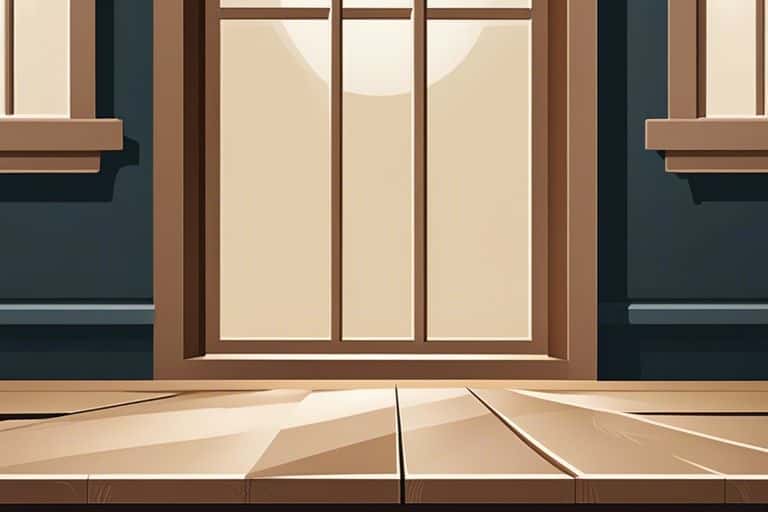
Factors to Consider Before Painting
There’s a crucial preparation phase that needs to be completed before painting wooden windows and doors. This ensures a long-lasting and high-quality paint job. Here are some key factors to consider:
- Weather and Environmental Conditions
- Condition of the Wood
- Paint and Material Selection
Weather and Environmental Conditions
Little Greene’s advice hub recommends taking into account the weather and environmental conditions when preparing to paint wooden windows and doors. Extreme temperatures, high humidity, or direct sunlight can affect the paint application and drying process. It is best to work in mild weather conditions to ensure the paint adheres well and dries properly. For more detailed guidance on painting wooden window frames, check out How to Paint Interior Wooden Window Frames.
Condition of the Wood
Conditions of the wood play a significant role in the overall painting process. Before painting, it’s imperative to assess the wood for any cracks, holes, or imperfections. These should be filled with a suitable wood filler, sanded smooth, and properly primed. Before proceeding with painting, ensure that the wood surface is clean, smooth, and free of any defects or damage.
Before painting, thoroughly inspect the wood for any signs of rot, mould, or water damage. Addressing these issues before painting can prevent further deterioration and ensure a smooth paint application. Properly preparing the wood surface is crucial for a successful and long-lasting paint finish.
Paint and Material Selection
The choice of paint and materials is crucial for achieving a durable and aesthetically pleasing finish on wooden windows and doors. Selecting a high-quality primer specifically designed for wood is imperative to seal the wood, provide a base for the paint, and enhance durability. When choosing paint, opt for paint formulated for wood to ensure longevity and a professional finish. The right paint and materials can make a significant difference in the final outcome of your painting project.
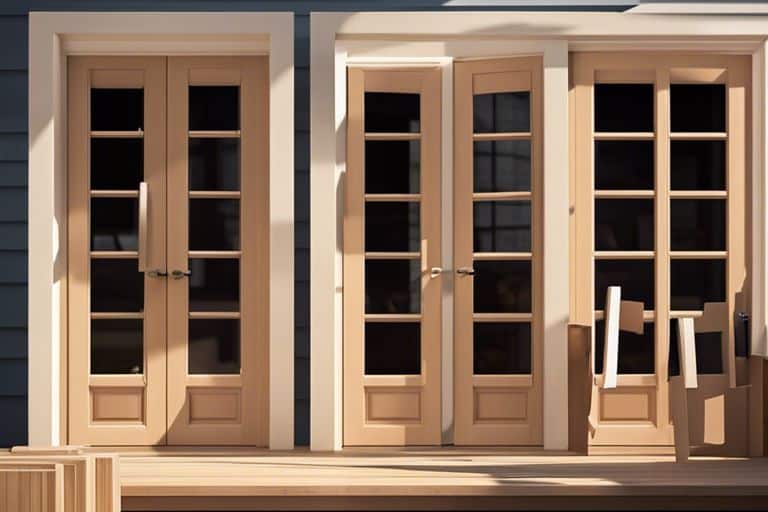
Tools and Materials Needed
List of Essential Tools
The tools required to prepare wooden windows and doors for painting are crucial for achieving a successful finish. Many of these tools can be found in your local DIY store. You will need items such as a scrub brush, fine-grit sandpaper, wood filler, and a primer specifically designed for wood. These tools will help you effectively clean, sand, repair, and prime the wood surface before painting.
Selection of Paints and Primers
Paints and primers play a crucial role in the durability and quality of your paint job. It is important to choose high-quality paints and primers that are specifically formulated for wooden surfaces. Many primers, like AQUAPRIMER 2900 and GORI 615, offer excellent colour equalisation, wetting properties, and reduction in discolouration from tannins and extractives in wood.
When identifying paints and primers, consider the type of wood you are working with and the desired finish. Opting for products like TEKNOS’ AQUAPRIMER 2900 or GORI 615 will ensure a smooth application process with a high-quality finish.
For instance, using ANTISTAIN AQUA 5200 or GORI 640/641 can help reduce discolouration from water-soluble tannins and extractives around knots in softwood. GORI 642/643 is recommended for hardwoods to prevent colour migration.
Safety Equipment
With safety equipment being vital during the painting process, it is crucial to wear the right gear to protect yourself. Many paint fumes and dust particles can be harmful when inhaled, so wearing a mask and safety goggles is crucial. Additionally, gloves should be worn to protect your hands from any chemicals or substances used during the preparation process.
For instance, wearing a dust mask, safety goggles, and gloves will safeguard you from potential hazards and ensure a safe working environment.
This service is provided by us, Express Windows Group.
Step-by-Step Preparation Guide
| Cleaning the Surface | Sanding Techniques |
|
Cleaning: Your wooden windows and doors need to be clean before painting. Use a mild detergent solution and a scrub brush to remove dirt, grease, and loose paint. Rinse thoroughly and let dry. |
One: To prepare the wood surface for painting, lightly sand it with fine-grit sandpaper. This helps to smooth out imperfections and create a rough texture for the new paint to adhere to. Wipe down the surface with a damp cloth after sanding to remove dust. |
Washing Imperfections
Washing: Check the wood for any cracks, holes, or imperfections that need to be repaired before painting. Fill these areas with a suitable wood filler, allow it to dry, and then sand it smooth for a seamless finish.
Priming the Wood
Wood: Before painting, apply a primer specifically designed for wood, such as AQUAPRIMER 2900 or GORI 615. Priming seals the wood, provides a base for the paint, and enhances durability. Follow the manufacturer’s instructions for drying times.
StepbyStep: Express Windows Group offers a comprehensive guide to preparing wooden windows and doors for painting. Ensure a smooth and high-quality finish by following these crucial steps. Keep in mind, proper preparation is key to a successful paint job.
Painting Techniques and Tips
After preparing your wooden windows and doors thoroughly, it’s time to focus on the painting techniques to achieve a professional and long-lasting finish.
Brushwork Skills for a Professional Finish
For brushwork skills that result in a professional finish, ensure you use high-quality brushes suitable for wood surfaces. Start by applying a primer specifically designed for wood to seal and prepare the surface. Use long, smooth strokes and maintain a consistent pressure for even coverage. After painting the first coat, allow it to dry completely before applying additional coats for a smooth and flawless finish.
Using Sprayers for Efficiency
Sprayers offer efficiency when painting wooden windows and doors, saving time and ensuring an even application of paint. When using sprayers, adjust the nozzle for the desired spray pattern and hold the sprayer at the correct distance from the surface. This allows for quick and efficient coverage, especially on larger surfaces. After using sprayers, clean them thoroughly to maintain their performance for future projects.
Painting with sprayers can be a game-changer for achieving a professional finish on wooden windows and doors, particularly when working on multiple units or larger areas.
Drying Times and Coating Intervals
Professional painting requires attention to drying times and coating intervals to ensure a successful and durable finish. Allow each coat of primer and paint to dry as directed by the manufacturer before applying the next coat. Finish by following recommended coating systems to enhance the longevity of the paint job, providing protection and visual appeal to your wooden windows and doors.
Finish each step with precision and care for a beautifully painted result that enhances the appearance and durability of your wooden windows and doors.
Pros and Cons of DIY vs. Professional Painting
| Pros | Cons |
| Cost-effective | Lack of professional expertise |
| Flexibility with timing | Time-consuming |
| Personal satisfaction | Potential quality issues |
| Control over the process | Risk of mistakes leading to costly repairs |
| Customisation options | May not have access to high-quality materials |
Cost Considerations
To ensure the best results, DIY painting may require purchasing special tools and materials, which can add to overall costs. On the other hand, hiring professionals may initially seem more expensive, but it often includes the cost of high-quality materials and expertise, potentially saving money in the long run.
Time and Effort
Effort spent on preparing the wooden surfaces, painting, and cleaning up can be significant for both DIY and professional painting. While DIY allows for flexibility in timing, it can be time-consuming. Professionals can complete the job efficiently, saving you time and effort.
Cost: The cost of DIY painting can be lower initially, but it may lead to costly mistakes that require professional intervention. Professional painting may have a higher upfront cost but can save you from potential repair expenses in the future.
Quality and Longevity of Finish
Time spent on preparation, such as proper cleaning, sanding, and priming, directly impacts the quality and longevity of the paint finish. DIY painting may lack the meticulous attention to detail that professionals provide, potentially affecting the overall durability and appearance of the painted wooden windows and doors.
Time: Investing in professional painting ensures a high-quality finish that can last longer, reducing the need for frequent repainting. Professionals use proven techniques and high-quality products, resulting in a more durable and aesthetically pleasing outcome.
Express Windows Group provides expert painting services for wooden windows and doors, ensuring a smooth process and superior finish that enhances the beauty of your home. Contact us for a quote and transform your property with a professional touch.
Maintenance and Care Tips
Now, regular routine cleaning and inspection is vital for keeping your wooden windows and doors looking great and functioning properly. Follow these tips to ensure your wooden surfaces stay in top condition:
Routine Cleaning and Inspection
- Tips: Start by cleaning the wood to remove any dirt, grease, or loose paint using a mild detergent solution and a scrub brush. Rinse thoroughly and let dry. Check for cracks, holes, or imperfections in the wood and fill them with a suitable wood filler. Regularly inspect the surfaces for any signs of damage or wear to address them promptly.
Any neglect in regular maintenance can lead to more significant issues down the line.
Touch-Up Strategies
- While routine cleaning is vital, sometimes you may need to take extra steps to keep your wooden windows and doors looking their best. Touch-up strategies, such as sanding and repainting small areas, can help maintain the overall appearance of the surfaces.
Inspection of the surfaces to identify areas in need of touch-ups is key in preserving the beauty of your wooden features.
On top of regular cleaning, applying a protective sealant or varnish can help protect the paint from weathering and wear. This added layer can shield the wood from harsh elements and UV rays, extending the lifespan of the paint and enhancing the overall durability of the surfaces.
This proactive approach to maintenance and care can help you ensure that your wooden windows and doors remain in top condition for years to come, maintaining their aesthetic appeal and functionality.
This service is provided by us, Express Windows Group.
Summing up
The process of preparing wooden windows and doors for painting is crucial to ensure a long-lasting and high-quality finish. Starting with cleaning to remove dirt and grease, followed by sanding to smooth the surface and allow the new paint to adhere properly, then addressing any repairs needed such as filling cracks or holes with wood filler. Priming with a suitable primer designed for wood is vital to seal the wood, provide a base for the paint, and increase the durability of the paint job. Teknos’ AQUAPRIMER 2900 and GORI 615 flow coat primers offer excellent run-off and wetting properties, colour equalisation effects, and compliance with VOC and REACH regulations. Their technical support team is available to provide advice on using their products for optimal coatings solutions.
The priming process ensures a trouble-free priming process with excellent surface appearance, reducing problems with discolouration and ensuring a smooth and fast manufacturing process. By following the recommended coating systems provided by Teknos, such as using GORI 615 for softwood 3-layers or AQUAPRIMER 2900 for all wood species 4-layers, you can achieve a professional and durable finish on your wooden windows and doors. Express Windows Group offers a comprehensive service to assist you in preparing your wooden windows and doors for painting, ensuring a high-quality result that will stand the test of time.
FAQ
Q: Why is it important to clean wooden windows and doors before painting?
A: Cleaning is vital to remove dirt, grease, and loose paint, ensuring a smooth painting surface.
Q: How should I clean wooden windows and doors before painting?
A: Use a mild detergent solution and a scrub brush, then rinse thoroughly and let dry.
Q: Why is sanding necessary before painting wooden surfaces?
A: Sanding helps to smooth out imperfections and provides a rough texture for the new paint to adhere to.
Q: What should I do to repair cracks or holes in the wood?
A: Fill them with a suitable wood filler, let it dry, and then sand it smooth.
Q: Why do I need to apply a primer before painting wooden windows and doors?
A: Priming seals the wood, provides a base for the paint to adhere to, and enhances the durability of the paint job.
Q: Which primer do you recommend for wooden windows and doors?
A: We recommend AQUAPRIMER 2900 & GORI 615 for superior flow coat priming on wooden surfaces.
Q: How can I get technical support for using AQUAPRIMER 2900 & GORI 615?
A: Contact Teknos for expert advice on using their products for optimal coatings solutions and application systems.

